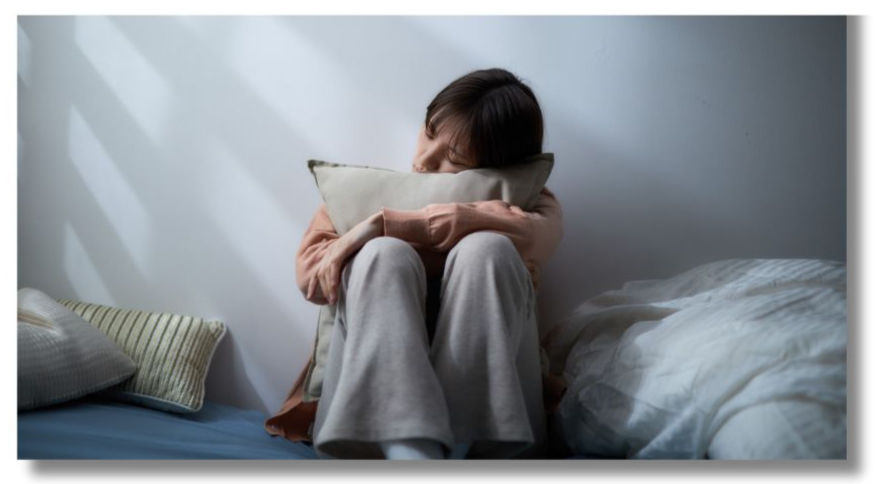Understanding Complex Trauma: And Gentle Ways to Support Your Healing
- Sep 30
- 3 min read
Updated: Oct 30

Jane Doe’s Story
Jane always wondered why she felt anxious and sad, even on calm days. She has her own family and children now but growing up she often felt invisible. She was anxious then too and often believed something was wrong with her—that she wasn’t doing enough, trying hard enough, or that she was unlikable. Her parents didn’t yell or hit her, but they were emotionally detached and unavailable. When she was picked on by her siblings or classmates, she remembers being told she was “too sensitive" and learned to hide her feelings.
As an adult, Jane struggles with self-doubt, finds herself in relationships where she gives too much, and sometimes feels like she doesn’t really know who she is. Anxiety is still present, along with the tendency to put everyone else’s needs before her own.
Jane never thought of her past as “trauma.” But what she experienced—emotional neglect and feeling unsafe to be herself—is a form of trauma. When these experiences happen repeatedly in childhood, they can create something called Complex Post-Traumatic Stress Disorder (CPTSD).
How Complex Trauma Can Show Up in Daily Life
CPTSD doesn’t always look like trauma. Instead, it often shows up in everyday struggles such as:
Feeling anxious or “on edge” even when nothing is wrong.
Struggling with self-worth, often feeling “not good enough.”
Falling into repeated unbalanced patterns in relationships or work.
Having trouble setting boundaries—or feeling guilty when you do.
Feeling disconnected, numb, or unsure of who you are.
Having big emotional reactions to small triggers.
These are not signs of weakness. They are your body and mind’s normal survival responses to long-term stress.
How CPTSD Affects the Body
Complex trauma isn’t just emotional—it deeply affects the body. It disrupts a child’s developing nervous system, and as an adult:
The nervous system may stay stuck in “fight, flight, or freeze.”
Stress hormones can remain high, disturbing sleep, digestion, and mood.
Muscles stay tense, leading to headaches, stomach upset, or body pain.
Fatigue and lowered immunity are common.
Your body isn’t betraying you—it’s working hard to keep you safe, long after the danger has passed.
Gentle Healing Practices
Healing is possible, and it begins with teaching your nervous system that it is safe. Here are some ways to support your mind, body, and spirit:
Ground in the present: Notice what you see, hear, smell, and touch to remind your body it is safe now.
Shift your inner voice: Replace “What’s wrong with me?” with “This is my nervous system protecting me. I am safe.”
Create calming routines: Morning journaling, mindful meals, or bedtime rituals can bring a sense of rhythm and safety.
Energy therapies (Integrated Energy Therapy & Reiki): These can release old trauma imprints and bring calm—sometimes offering the first true sense of peace.
Yoga & gentle movement: Breath-based movement releases stored tension and reconnects you with your body.
Meditation: Even a few minutes a day can settle racing thoughts and slowly rewire your nervous system.
Journaling: Writing organizes thoughts, helping to reframe old beliefs and patterns and connects your thoughts with your body as you write.
These practices don’t erase the past, but they can retrain your brain and body’s response to stress and help you feel more grounded, balanced, and whole.
Simple Self-Help Practices
5-4-3-2-1 Grounding Exercise: Notice 5 things you see, 4 you feel, 3 you hear, 2 you smell, and 1 you taste. Picture yourself rooted to the earth and releasing old energy, thoughts and feelings..
Hand on Heart Breathing: Place your hand over your heart, take slow breaths, and silently say, “I am safe. I am here.”. Picture yourself breathing in the light of calm, peace and grace.
Helpful Resources
If you’d like to learn more, here are three well-loved resources:
Complex PTSD: From Surviving to Thriving by Pete Walker – approachable and compassionate.
The Body Keeps the Score by Bessel van der Kolk – explains how trauma lives in the body and ways to heal.
Talks by Dr. Gabor Maté (YouTube) – warm, insightful, and easy to understand.
Closing Thoughts
Complex trauma doesn’t only come from physical harm. It can also grow quietly in childhood homes where love felt conditional, emotions weren’t welcomed, or safety was uncertain.
If parts of Jane’s story sound like yours, please know you are not alone. Healing begins with awareness, and gentle practices like energy therapy, yoga, meditation, and journaling can guide your mind and body toward calm and resilience.
You are more than your past. With compassion and care, you can rediscover your sense of safety, worth, and joy.




Comments